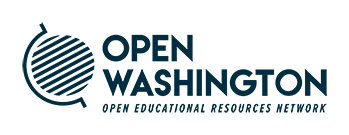Module 3 – test
Module 3: Open License
In the previous module we learned that open educational resources (OER) are educational materials that
- have been released under an open license that permits their free use and re-purposing by others or,
- reside in the public domain
In this module, we will discuss the types of open licenses and how to apply them.
What is an open license?
A license is a document that specifies what can and cannot be done with a work. It grants permissions and states restrictions. Broadly speaking, an open license is one that grants permission to access, re-use and redistribute a work with few or no restrictions (definition from Openedefinition.org).
Please see the diagram below to see the difference between all rights reserved copyrights and open license.
There are many open licenses developed for different areas of knowledge. However, when it comes to open educational resources the most typical and common open licenses used are Creative Commons Licenses.
Allow me to give you a bit of background. You have probably heard of an open source license, a type of license for computer software that allows source code to be used, modified and shared under defined terms. The free software movement was launched in 1983. Since then the folks in the computer software world have been widely developing and sharing the open source code with a clear licensing system. Additionally, other open licenses in the computer-related areas have been developed, such as open database licenses and open game licenses.
But what about the rest of the knowledge materials that are not computer program related?
In 2001, inspired by this open source license move in the computer software world, a group of experts comprised of educators, technologists, legal scholars, investors, entrepreneurs and philanthropists gathered together to come up with a set of copyright licenses that would allow creators to easily share materials that were not software code, such as blogs, photos, films, books, etc.
They founded a nonprofit organization called Creative Commons and developed the first set of open licenses in 2002. These Creative Commons licenses brought clarity and ease to sharing materials online.
In summary, there are many open licenses developed for different areas of knowledge (please see the diagram below). Creative Commons licenses are mostly widely used copyright licenses that would allow creators to easily share materials that were not software code, such as blogs, photos, films, books, etc.
We will discuss Creative Commons more specifically in the next Module.


